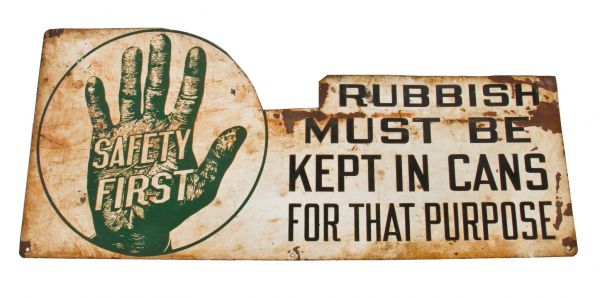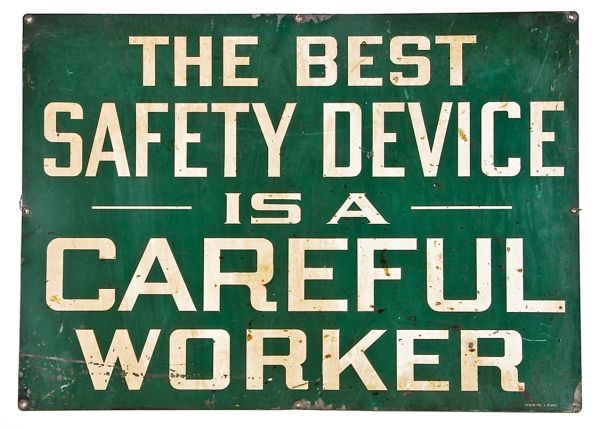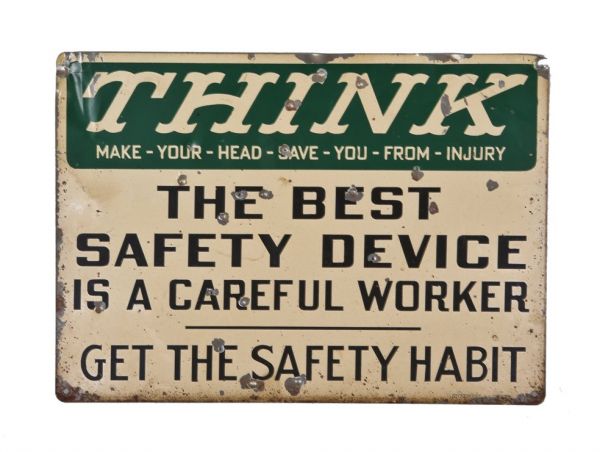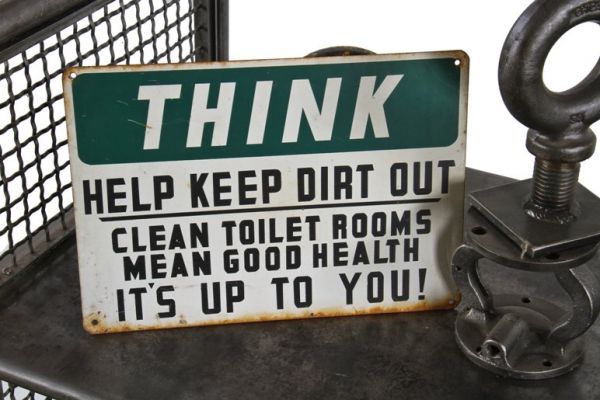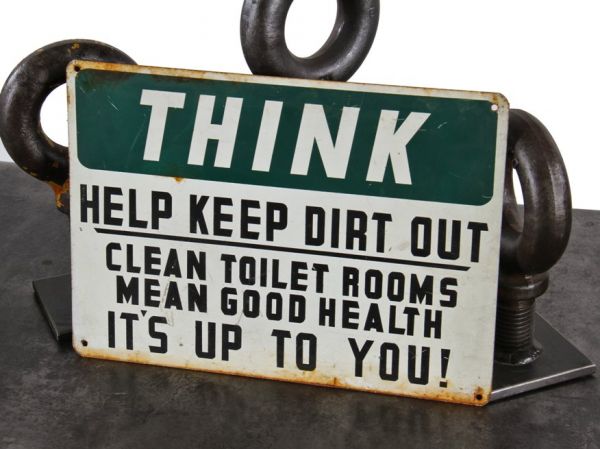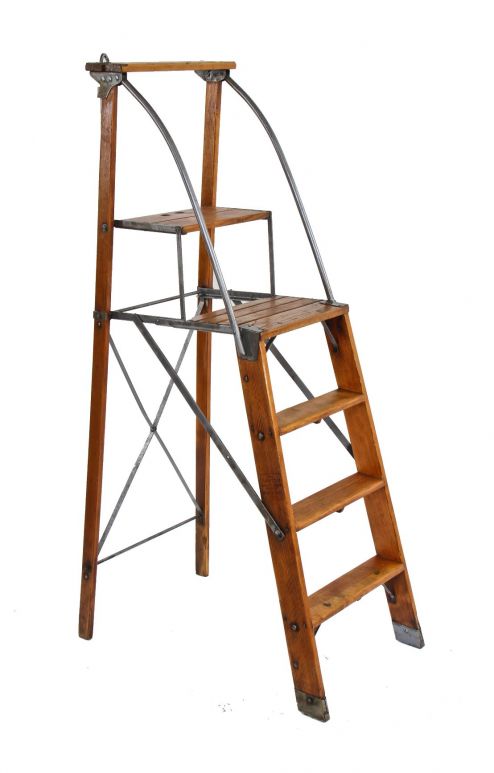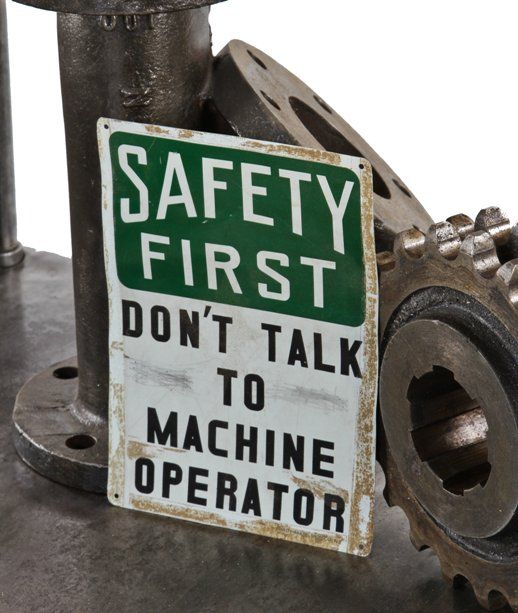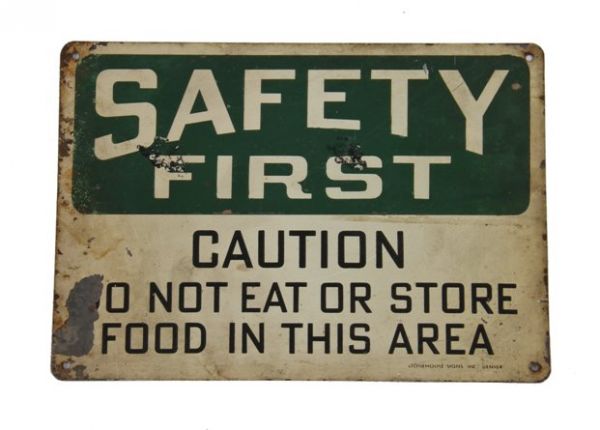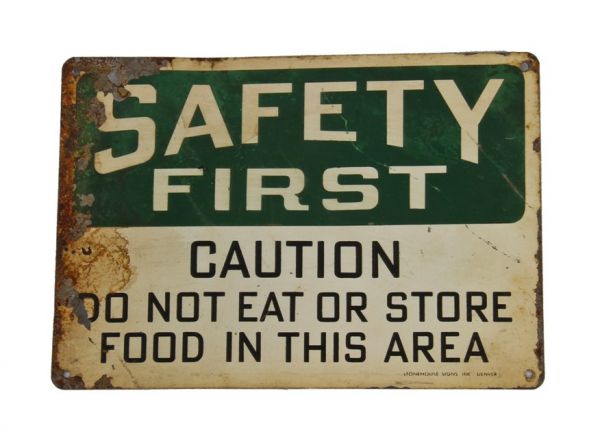modified c. 1940's vintage american industrial shopworn single-sided die cut steel safety first "rubbish" factory sign with original baked enameled finish
SOLD
Out of stock
SKU
UR-20751-14
stonehouse sign co., denver, co.
significantly altered c. 1940's vintage american industrial single-sided die cut steel safety first "rubbish" factory sign designed and fabricated by the stonehouse sign co., denver, co. the lightweight steel sign retain the nicely aged, shopworn finish. the lithographed "halting hand" logo and lettering are in great shape, considering age. surface rust and discoloration evident. the sign originally was designed to notify or remind the factory worker that oily rags were to be kept in their trash cans. at some point, someone removed the "oily waste" portion to make it less specific (in terms of discarding waste). the stonehouse sign company traces its roots chicago, il., where william stonehouse opened a sign shop in 1863. there he taught his son, james wesley stonehouse, the art of gold leaf lettering on store front windows for banks, offices, and other commercial businesses. in 1904, james moved west with the gold mining boom and set up shop in douglas, arizona, advertising, “j.w. stonehouse, painter of good signs, pictures and framing.” after following the mining boom from place to place, j.w. moved to the victor-cripple creek region of colorado. it was here that the "accident prevention" sign business was born. mining was one of the most dangerous industries to work in during this time. miners used bell signals to control the hoists that raised and lowered men and material in the mine shafts. since these signals varied by location and state, there were numerous accidents due to miners getting confused about what signal defined what action. mr. stonehouse saw a need for increased safety and communication to protect the workers. he went to the colorado bureau of mines and lobbied for standardized bell signals for all mines in colorado. confident that his logic would be acted on, stonehouse printed standardized bell signal signs, which would help reduce accidents and injuries. when the mining bureau enacted the standard, he was ready to sell from inventory his silk screen printed signs, which provided an easy way for the mine operators to comply with the new regulations. stonehouse's interest in worker safety and his colorado state code of mine bell signals - considered one of the first standardized industrial safety sign - resulted in the creation of the accident prevention sign industry. as the concept of “workplace safety” was beginning to take hold in america, the contributions of j.w. stonehouse and stonehouse signs were beginning to be felt in colorado and across the nation. in 1914, stonehouse was moved to denver, with a continued emphasis or focus on concern for safety and standardization. stonehouse's efforts resulted in the creation of the “danger”, “caution” and “notice” panels that are in widespread use today. measures 20 x 9 1/4 inches
You Might Also Like
WORDLWIDE SHIPPING
If required, please contact an Urban Remains sales associate.
NEW PRODUCTS DAILY
Check back daily as we are constantly adding new products.
PREMIUM SUPPORT
We're here to help answer any question. Contact us anytime!
SALES & PROMOTIONS
Join our newsletter to get the latest information

